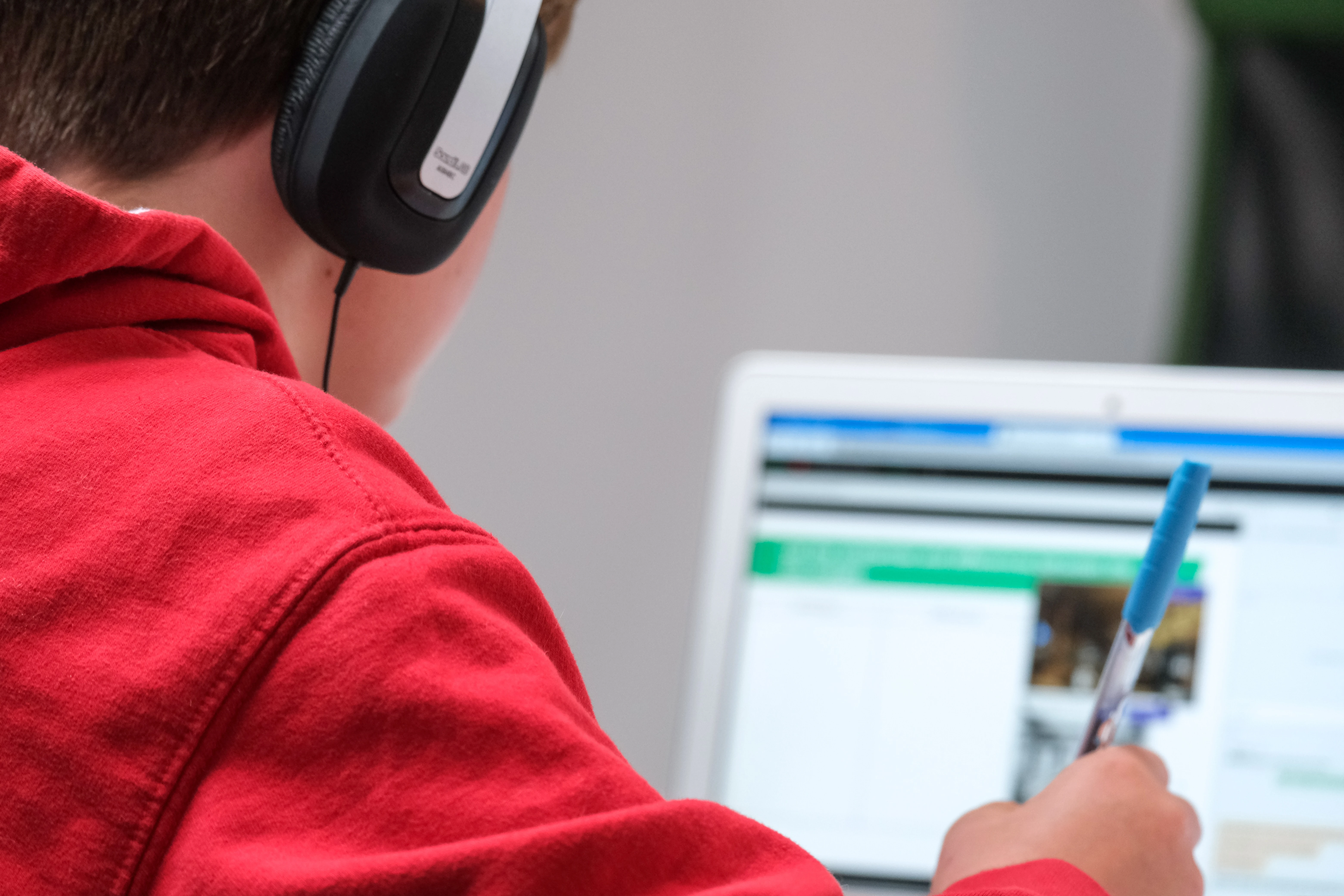
Best learning management systems of 2023
Jul 10
8 min read
The advancement of education technology has brought about a revolution in monitoring student progress and development. One notable innovation in this field is the introduction of Learning Management Systems (LMS).
A well designed LMS can empower educators and learners by providing comprehensive data-driven insights and resources, transforming the learning process.
Read on to gain a deeper understanding of LMS, including defining characteristics, key features, notable platforms, and an example of how they might function in a school setting.
What are learning management systems (LMS)?
Think of an LMS as a centralized hub for educators, trainers, and learners. It provides a virtual space where these stakeholders can interact, access learning materials, participate in activities, and track progress. An LMS serves as a comprehensive tool for managing educational courses or training programs.
A modern Learning Management System is an online platform that goes beyond simply delivering educational content. Many LMS have the remarkable ability to analyze a student's progress in real time and react accordingly. This means that the LMS can customize its content and delivery methods to cater to the unique learning needs of each individual learner. By doing so, the goal is to provide students with personalized instruction optimized for maximum efficacy.
LMS platforms are incredibly versatile. They can be utilized in schools and institutions of higher learning to administer and manage curricula, allowing teachers to organize and deliver educational content to students. They can also be used by companies to provide training to their staff and external stakeholders.
Regardless of setting, the LMS acts as a convenient and efficient way to deliver and track educational experiences.
To give you a better idea of how an LMS can benefit those in the education sector, check out this client review of a custom-built education app for an example of how these solutions are making a positive impact in ed tech.
Learning management system features
LMS platforms offer a wide range of features and functionalities that enhance the learning experience. These may include:
Course management
LMS allow instructors to create and organize course content, including lessons, assignments, quizzes, and multimedia resources. They provide tools for structuring, sequencing and delivering the learning material.
User management
LMS platforms enable administrators to manage user accounts, enroll learners, assign user roles and permissions, and track user activity within the system.
Communication and collaboration
Through communication tools such as discussion forums, messaging systems, and video conferencing, LMS systems facilitate interaction and collaboration between instructors and learners or among peers.
Assessment and feedback
These systems provide a range of assessment features that enable educators to create quizzes, tests, and assignments. Some LMS offer tools that automatically grade these assessments, allowing learners to receive timely feedback. This not only streamlines the evaluation process but also allows for more effective tracking and analysis of learner performance and progress.
Progress tracking and reporting
Within an LMS, you'll find various mechanisms designed to track learners' progress. These include completion tracking, grade books, and analytics dashboards. By leveraging these tools, educators can gather valuable data that can be used to generate comprehensive reports and evaluate the effectiveness of courses or training programs.

Personalization and adaptability
Advanced LMS platforms utilize adaptive learning techniques to enhance the learning experience by tailoring it to individual learner needs and preferences. These platforms have the ability to recommend pertinent resources, dynamically adjust the difficulty level of content, and offer personalized feedback to optimize learning outcomes.
Integration and Compatibility
LMS platforms frequently integrate with various systems, including student information systems, content repositories, and external tools, to optimize workflows and expand functionality. This seamless integration enhances the overall efficiency and effectiveness of the learning management process.
Gamification
A study by Zippia found that applying gamification principles to learning technologies can significantly impact student performance. A math teacher at one US elementary school observed a 34% increase in average test scores, after four months of using math games.
When applied thoughtfully, LMS leaderboards and merit systems can improve student engagement by creating healthy competition and inspiring learners to strive for self-improvement.
Best learning management system examples in the field
There are many powerful learning management systems available in 2023. Let’s take a look at a few of them:
Canvas
Canvas is a web-based learning management system that provides a platform to manage course materials and facilitate communication about learning progress.
Canvas is used by learning institutions, including schools and universities, as well as by companies and organizations (for training purposes). It offers various features and tools for course creation, management, and assessment.
With Canvas, instructors can easily create and share course materials like assignments, discussions, quizzes, and worksheets. This LMS provides an interactive environment where students can work together through features like collaborations, conferences, and groups.
Canvas allows instructors to set learning outcomes and use rubrics to monitor how well students are developing their skills and achieving their goals. This helps both instructors and students keep track of progress and identify areas for improvement.
Anyone can use Canvas, and the Canvas Community provides resources like tutorials, guides, forums, and special interest groups for support and information.
Key features of Canvas include:
- Customizable course creation and management tools
- Analytics and statistics for courses and users
- Internal communication tools
- User roles and permissions such as admins, instructors, teacher assistants, students, and parents, each with specific access and interactions within the system
- Access on web browsers and through mobile apps
- Real-time interactions facilitated through a live chat
In addition to its core features, Canvas offers a range of additional functionalities to enhance the learning experience:
Canvas App Center
The Canvas App Center provides access to a diverse selection of external apps and services that can be integrated to enrich the resources available.
Canvas Analytics
Canvas Analytics offers valuable insights into student success, allowing instructors to track and analyze data related to student performance, engagement, and progress.
Canvas Catalog
Canvas Catalog serves as an online marketplace, enabling easy course registration and enrollment for learners.
Canvas Studio
Canvas Studio is a tool specifically designed for interactive video management, allowing instructors to create and manage video content that enhances the learning experience.
Canvas Commons
Canvas Commons facilitates content sharing among instructors, providing a platform for collaboration and the exchange of educational resources.
MasteryConnect
MasteryConnect is a feature within Canvas that focuses on assessment management, enabling instructors to create, administer, and analyze assessments to measure student understanding and progress.
Portfolium
Portfolium is a dedicated feature for ePortfolios, allowing students to showcase their work, projects, and achievements in a digital format.
SpeedGrader
Instructors also have access to tools like SpeedGrader, which simplifies the process of providing feedback on student assignments.
Canvas Gradebook
Canvas Gradebook, facilitates efficient grade management and organization. Its features support instructors in delivering effective assessments and maintaining accurate records of student performance.

Google Classroom
Google Classroom is an online learning management system developed by Google. It provides educators with a digital platform to create, distribute, and manage assignments, as well as facilitate communication and collaboration with students.
Google Classroom is designed to enhance the learning experience by streamlining workflows and promoting digital engagement.
Some of the key features of Google Classroom are:
Virtual Classroom
With Google Classroom, teachers can create virtual classrooms and invite students to join using unique class codes. Within these classrooms, teachers can create and share assignments, announcements, and study materials. Students can access these resources, complete assignments, and submit them digitally. Teachers also have the ability to provide feedback, grade assignments, and track student progress.
The inclusion of Live Lessons within Google Classroom enables teachers to conduct real-time virtual classes, fostering interactive learning experiences and promoting collaboration among students.
Integrations
One of the advantages of Google Classroom is its integration with other Google tools and services. It seamlessly integrates with Google Drive, allowing teachers and students to easily share and collaborate on documents, presentations, and other files.
Google Classroom also integrates with Google Meet, providing a platform for virtual classes, live lessons and study groups.
Communication
Google Classroom offers robust communication features to facilitate seamless interaction between teachers and students. Through class discussions, students can actively engage, ask questions, and share insights with their peers, while teachers moderate and guide the discussions.
Private messaging allows direct communication between teachers and students for personalized support, clarifications, and feedback.
Teachers can leverage the platform to post announcements and reminders, ensuring important information reaches all students promptly. These communication features create an inclusive and collaborative learning environment, where students can participate, seek guidance, and receive individualized support, enhancing engagement and fostering stronger teacher-student connections.
Accessibility
Google Classroom is accessible on various devices, including computers, tablets, and smartphones, making it convenient for both teachers and students to access course materials and participate in online learning activities.
It offers a user-friendly interface and supports multiple languages, ensuring accessibility for users worldwide.
Google Classroom provides a digital ecosystem that simplifies the management of assignments, enhances communication, and promotes collaboration between teachers and students, fostering an efficient and interactive learning environment.

Example of an LMS integration for schools
Learning management systems have become integral tools in schools, providing an opportunity to provide a hybrid learning experience.
LMS integrations and systems offer a range of features and functionalities to support educators and students in their teaching and learning processes.
Let's take a look at an example of an integrated LMS system for schools.
LearningWrite
LearningWrite, developed by Twenty Ideas, is a specialized language learning platform designed specializing in the facilitation of Spanish writing practice. It offers a diverse set of features and tools to support students at different proficiency levels while providing valuable insights into their progress throughout the academic year.
With LearningWrite, educators can effortlessly benchmark the progress of their students and classrooms without the need for frequent testing. The platform enables teachers to meet students at their individual skill levels, providing personalized feedback and encouragement based on STAMP testing standards.
One of the platform's notable advantages is its ability to generate high-quality prompts and perform standardized grading, saving teachers valuable time and allowing them to focus on students who require extra attention.
LearningWrite offers the flexibility to schedule prompts in advance, along with a diverse selection of engaging themes aligned with the AP curriculum, fostering regular writing practice among students.
Integration with popular learning management systems like Canvas, Google Classroom, and ClassLink streamlines the assignment and score transfer process, enhancing the overall user experience.
The platform also prioritizes student privacy, ensuring the protection of personal information.
LearningWrite caters to various educational institutions, including public school districts, private schools, and higher education establishments, offering a comprehensive solution to improve students' Spanish writing abilities while promoting teacher efficiency and student engagement.

Final thoughts
Learning management systems have revolutionized education by providing a centralized hub for interaction, access to materials, and progress tracking. These advancements have made the learning process more effective and efficient while also enabling more personalized learning experiences through data-driven insights and adaptive technologies.
At Twenty Ideas, our passion lies in revolutionizing education through innovative solutions that combine our collaborative approach and technological expertise.
We collaborate with schools, universities, researchers, nonprofits, and private sector innovators to tackle significant challenges in education. Our ed tech services include ML-powered auto-scoring, natural language processing (NLP), and seamless integration with learning management systems (LMS).
Join us on this transformative journey to shape the future of education, together!
Mike Biglan
Founder and CEO Mike Biglan has led the creation of transformative digital products adopted by millions of users–including digital therapeutics, AI-powered RPM platforms, an X-Prize-winning adult literacy intervention, and more. Mike also led the creation of Marco Polo, an acclaimed consumer-facing video messaging/streaming app with tens of millions of downloads.
by this author




